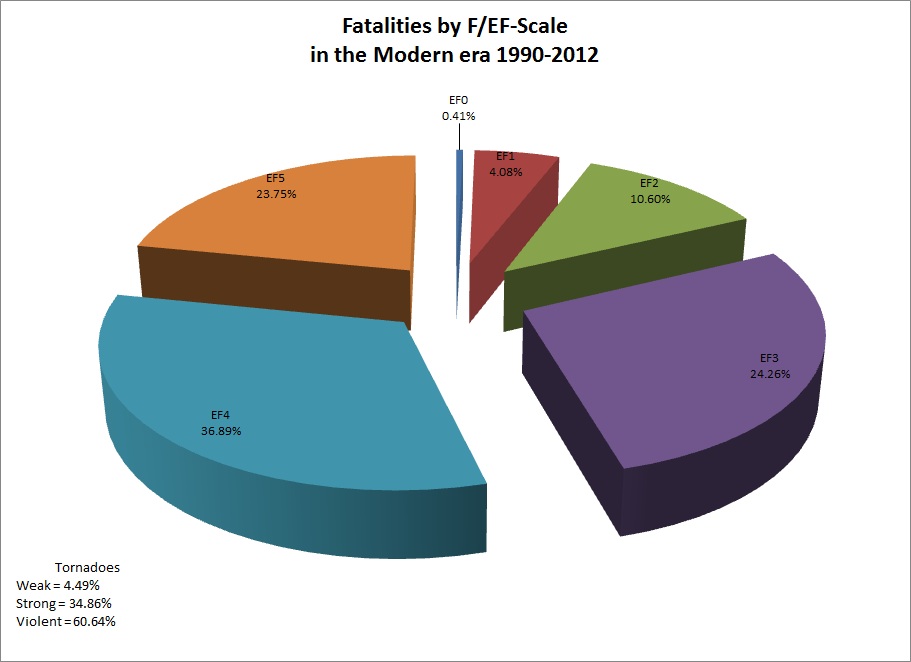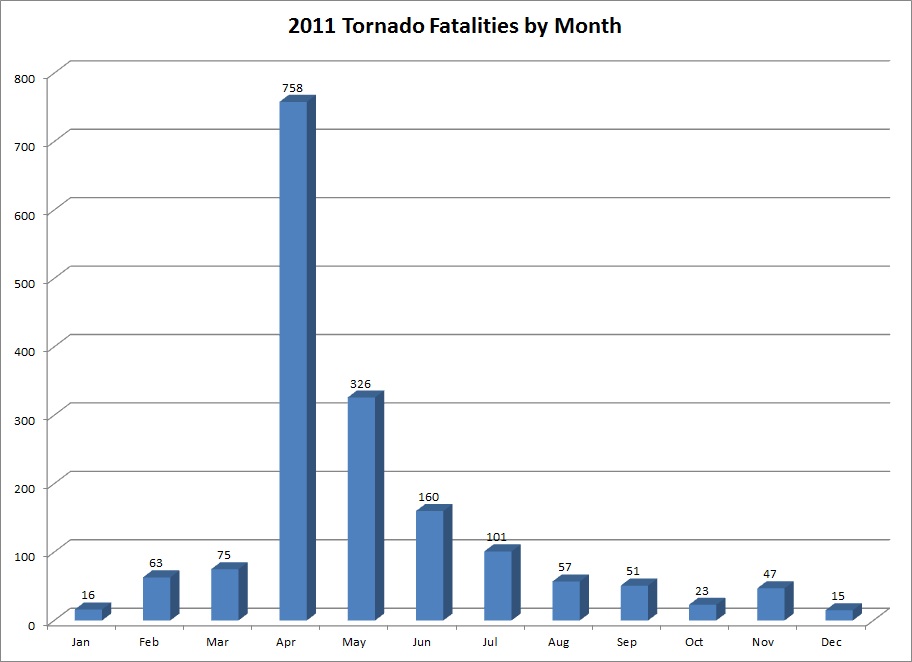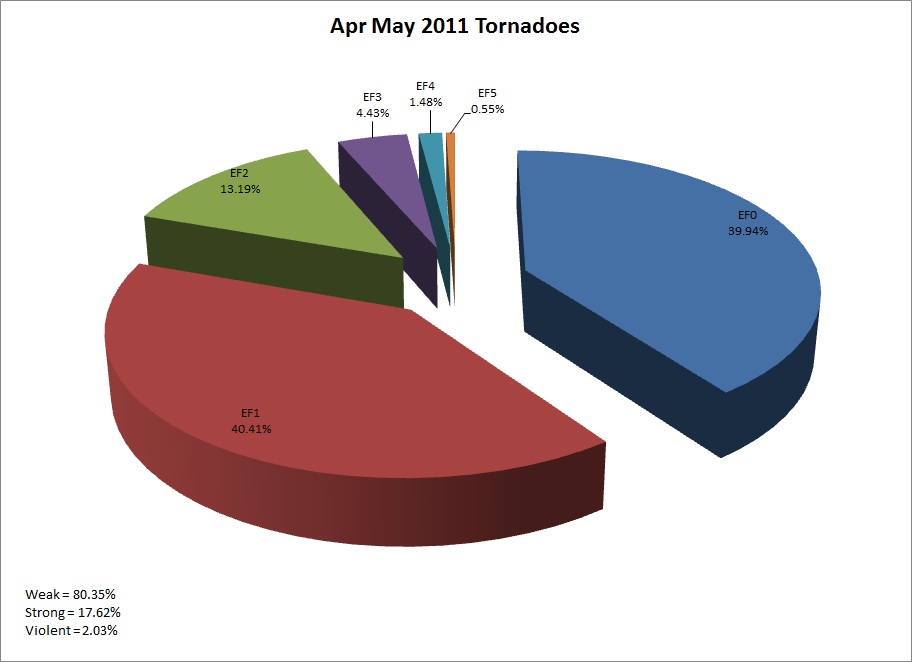So, adding to this information and the previous blog, below is the fatalities by F/EF-Scale ratings of tornadoes during the modern era:
 |
| Fatalities 1990-2012 associated with F/EF Scale damage ratings. |
Let's look at the violent tornado months of April and May, 2011 which were the most active tornado months since 1953. These months had 1084 tornadoes that resulted in 538 fatalities (see below).
These months included the tornado outbreaks that occurred over MS, AL and parts of GA April 27-29, and also the Joplin, MO tornado of May 22, 2011. The damage in Joplin was rated as EF5 and resulted in 158 fatalities.
During the months of April and May 2013, only 2% of the tornado damage was rated EF4 or EF5 (22 of the 1,084 tornadoes reported)
But, these tornadoes were attributed to 83.5% of the fatalities during these months! This is an alarming figure considering how well-warned people were during many of these events. Notice that 0.55% of the tornado
damage rated EF5 was linked to 53.5% of the tornado-related deaths! And, by well-warned, there were moderate and high risks for severe weather issued by the NOAA Storm Prediction Center including several days of highlighted information days in advance, and many NWS Weather Forecast Offices issued hundreds and hundreds of warnings in association with these events.
So, how does this data and the previous data show any change between the F-Scale and EF-Scale? We have much smaller numbers for EF5 damage than we used to. We always stated that 1% of all tornadoes were rated the totally damaged EF5. During the modern era, we have reduced that for the most part, and it's even less when you put aside the 2011 tornado year. In 2013, we know of 2 tornadoes with EF5 damage: Moore, OK on May 20th and El Reno, OK on May 31st. Assuming there are 1200 tornadoes on average, that is still 0.01% of all tornadoes that will still play a majority of the tornado fatalities.



